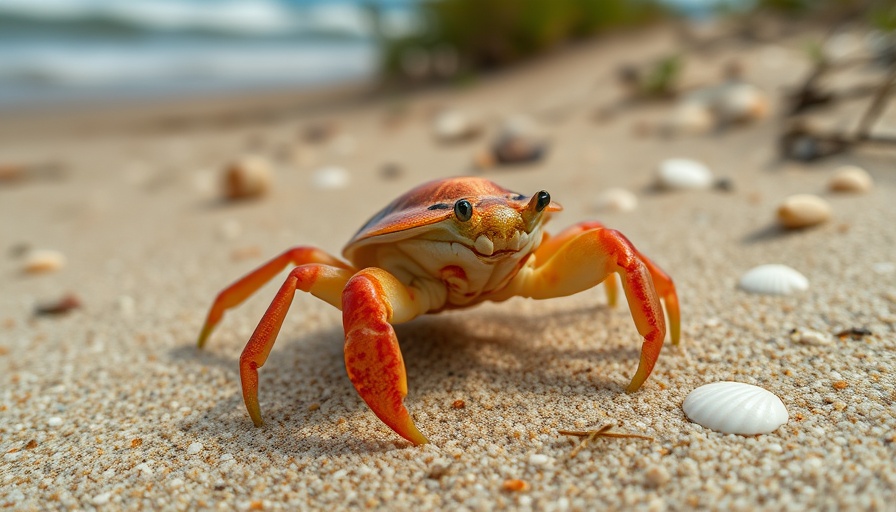
Understanding the Commitment of Owning a Hermit Crab
When considering adding a hermit crab to your family, it's essential to realize that these creatures require far more than just a tank and some food. Hermit crabs require a balanced diet, specific environmental conditions, and proper care to thrive. Potential pet owners are often misled by their appealing appearance and low price, leading to a common misconception that they are easy-to-care-for pets.
Hermit Crabs: Not Your Average Pet
Purchasing a hermit crab can seem like an innocent choice after a long day at the beach. However, understanding their unique needs can prevent the all-too-common scenario where new owners find their hermit crab dead shortly after bringing them home. These creatures can live between 10 to 50 years in captivity with the right conditions. Prospective owners must invest in an appropriate habitat, including heat sources and humidity gauges, to mimic their natural environment.
The Environmental Impact of Harvesting Hermit Crabs
Sadly, many of the hermit crabs found in souvenir shops along the Jersey Shore are shipped in from their tropical homes like the Caribbean. The journey often proves perilous, with substantial mortality rates during shipping due to starvation, dehydration, and improper handling.
Choosing Ethical Sources for Your Hermit Crab
For those genuinely interested in keeping hermit crabs, it's advisable to find reputable breeders or rescue organizations rather than buying from gift shops. Mary Akers, a noted crab breeder and advocate, emphasizes the importance of adopting crabs from responsible sources to discourage the unsustainable harvesting of wild populations.
Common Misconceptions About Hermit Crabs
A common myth surrounding hermit crabs is that they are merely throwaway pets. However, this mindset not only dismisses their complex nature but contributes to their mistreatment. More awareness is needed around their needs and the ethical responsibilities of owners. Consumers must look beyond the attractive painted shells and recognize the potential long-term commitment.
Taking Action: How to Be a Responsible Hermit Crab Owner
Being a responsible hermit crab owner encompasses more than just ensuring they are fed. It's about providing an enriching and nurturing environment that mirrors their natural habitat. For those considering adopting, various resources and communities are available that can provide insights and support for new pet owners.
In completing your journey toward hermit crab ownership, remember the commitment that lies ahead. Through awareness and understanding, we not only enrich the lives of these creatures but also discover valuable lessons about our responsibilities as pet owners.
 Add Row
Add Row  Add
Add 




Write A Comment